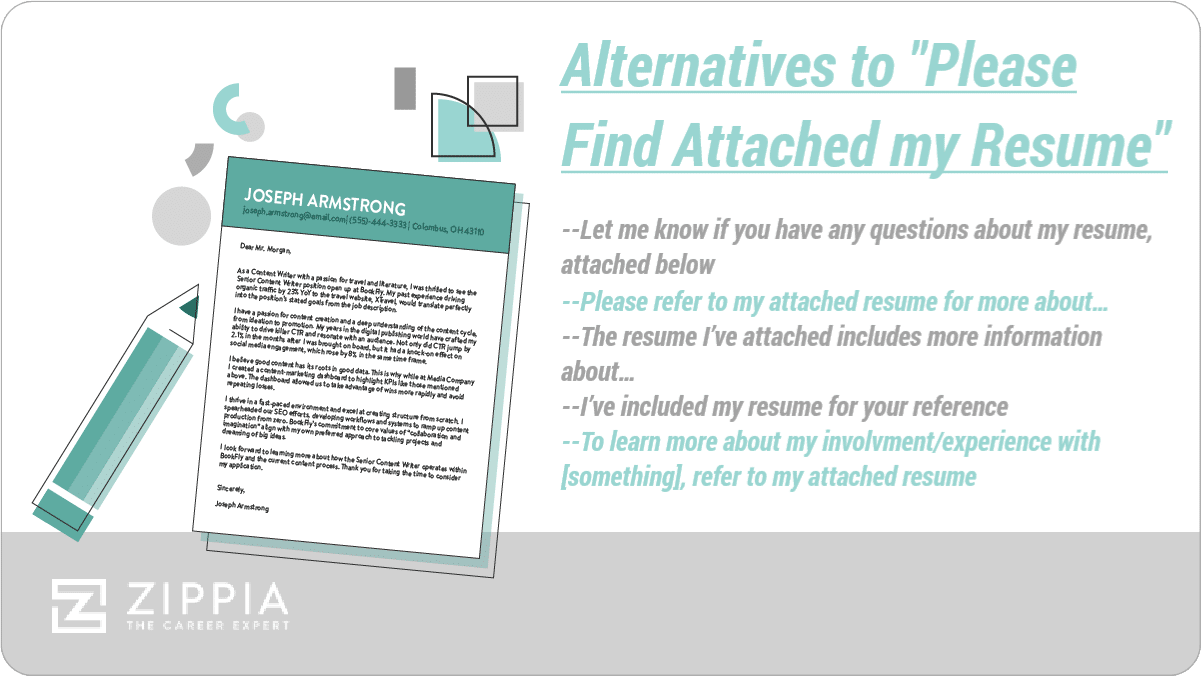- Post Interview Checklist
- Post Interview Checklist
- Thank You Email After Interview
- Follow Up Email After Interview
- Follow Up After Phone Interview
- Follow Up On Job Application
- Questions To Ask After An Interview
- Questions To Ask Before Accepting A Job
- Steps In The Hiring Process
- Reading Job Descriptions
- How To Recover From A Bad Interview
- Reference Requests
- Reference Examples
- Personal Reference Letter
- Recommendation Letter for Employment
- Professional Reference Letter
- Reference Letter Template
- Reference Letter for a Friend
- Professional References
- List Of References
- Recommendation Letter From Employer
- Academic Reference Letter
- Business Reference Letter
- Recommendation Letter for a Promotion
- Character Reference Letter
- Reference From A Manager
- Job Offer And Requirements
- How To Accept A Job Offer
- How To Decline A Job Offer
- Employment Contract
- Pre Employment Physical
- How To Get Secret Clearance
- Pre Employment Drug Tests
- How To Respond To A Job Rejection Email
- What Does Employers Look For In A Background Check
- How Long For A Career Background Check
- How To Ask For Time To Consider A Job Offer
- How To Turn Down A Job Offer But Keep The Door Open
Find a Job You Really Want In
The job market is full of job descriptions, and it can be overwhelming. Many on the surface look the same, and if you are not careful, you will treat them all the same.
However, not all job descriptions are created equal. Some are more effective than others to give you a better impression of what the job entails and whether it is the right fit for you.
If you are trying to find a job, you do not want to waste time on unhelpful job descriptions. So make sure your ability to read job descriptions is at its best. Like any skill, it takes diligence and practice, but it is not an impossible task. In fact, there are clear strategies to follow.
What Is a Job Description?
A job description, or job posting, is a written statement that details the role of a position within a company. Usually, job descriptions are used to attract applicants when there is an open position. Companies may also use job descriptions internally to better organize and understand the role and responsibility of the job.
A job description is at its best when it can succinctly summarize the needs and expectations of the position. You should be able to read a job description and have a clear picture of what the job would look like. This comes from not only a good job description but a good reading of the description as well.
Where to Start When Reading a Job Description
The best place to start when it comes to job descriptions is to understand their structure. Many job descriptions follow similar patterns of organization.
Deciphering why and how certain elements of a job description exist will give you an advantage. You will be able to register what you see quickly, and this, in turn, will maximize your time and energy.
The job description layout usually is as follows:
-
Job title. Understand that job titles are fluid. Their meanings are not always the same. Do not base your judgment on the job title alone. Different companies may have different titles for positions that have similar responsibilities. Also, be aware some titles are not truthful to the job at hand, as some companies treat job titles like click-bait.
Watch out for titles that sound contradictory or too good to be true, like “entry-level management position.” Still, don’t ignore a job description based on the title alone. The title is an intro, nothing more. If you really want to understand a job description, you have to read further.
-
Summary. Most job descriptions have a one to two paragraph summary. Look for buzzwords that can hint at the type of role you can expect and the company culture.
Descriptive buzzwords can help you hone in on the job. Use these later when you write your cover letter and in the interview.
Be wary of generic and non-descriptive summaries because that might mean the company has not put a lot of time, effort, and thought into who they are trying to hire.
However, don’t be perturbed by brief, direct summaries and descriptions, as long as they give a clear picture.
-
Company description. This may be found either in summary or in its own section. Again look for buzzwords that help give you a hint to the company culture, such as “fast-paced” or “team-oriented.”
It is important to know about the company before you apply. You want to make sure your values, skills, and work habits match the environment.
This will help you in your cover letter and your interview as well. You can show you researched the company ahead of time and articulate how you fit into the role and the company.
-
Requirements/Qualifications. This is where the job description begins to define the specific type of employee the company desires. Requirements include education, past job experience, portfolios of work, past accomplishments, and more.
Most job descriptions list their requirements in order of importance. Generally, you want to be able to match the first three or four requirements.
-
Experience required. Here you may see a separate section that lists specific years of experience required for the role. Do not be put off if you do not fit the exact range. Many businesses are willing to make adjustments if your experience and skill set show that you are still capable of the job.
-
Skills. The skills listed are going to tell you the skills you will need to use at the job. Like requirements, they should be ordered by preference. Look for keywords like “required” vs. “preferred.” Again you should match at least the top three or four skills but don’t worry if you don’t match them all.
It is possible that skills listed towards the bottom are generic and put there for HR requirements. Remember, the most important thing to do is to be able to make a case for yourself when you apply.
-
Responsibilities/Duties. This explains what is expected of you in the position. Look to see if the responsibilities are described in general or specific terms. You may get the impression that your job is overarching in many different roles or else very confined to certain tasks.
Hopefully, you should recognize most of the duties and feel especially comfortable with the top three or four roles. If you don’t recognize some of the duties, reframe this as a learning and growth opportunity in further discussions.
-
Salary/Pay/Benefits. An hourly wage job’s description usually provides a specific amount or range amount given. If the job is salary, there are different options in which the company may list the information. They may list a single salary amount but do not think this can not be negotiated.
The company may give a salary range, in which case you can use it for later negotiations. Or the company may not choose to list the salary. This provides them with negotiating strength later on, so make sure to do your research and find what a reasonable salary looks like for the position.
Meanwhile, “Benefits” will be listed because they should be standard for all employees of the company.
How would your prepare for an interview?
Alexa Loken
Owner Career Coach
Loken Careers
I tell clients to pull out all adjectives (personality traits) and skills from a job description and then craft short, narrative stories of how they’ve encompassed that skill or trait in their professional life — that will prepare them for the vast majority of questions that an interviewer will ask.
Tips: What to Look for in a Job Description
Since many job descriptions share similar traits in their structure, there are certain elements to look out for that can help you quickly understand if a job description is right for you. Keep an eye out for things such as:
-
Prioritization of bullet points. Most sections should be bulleted. This not only makes it easier to read, but it allows companies to list their qualifications in order of need and preference. Make sure to distinguish between “must-have,” “required,” “preferred,” “nice to have,” descriptive language.
-
Look for repetition. Repetitions of phrases of skills and responsibilities give you insight into what is most important about the job. Repetitions can help make a job posting stand out, so make sure it adds legitimate information to the description and is not simply a marketing trick.
-
Buzzwords. Similarly, look for buzzwords like “self-starter” or “team player” to get an idea of the role and how it fits in the company. Some buzzwords can be good signs, while others such as “flexible to new situations” may give you a moment to pause and consider that the environment may be difficult or chaotic.
-
Ask yourself questions. At every point, ask yourself questions about what you are reading to help determine if you are a good match.
Questions include: Would I be happy with these responsibilities? Do I have these skills? Does this job align with my values and career goals?
Be honest with yourself because you will only hurt yourself down the line if you are not.
-
Follow the directions. Make sure you do what the description asks when it comes to applying.
For example, they may ask you to apply via the company website or ask for a cover letter. This will be your first interaction with this company, so you want to prove you are competent in following directions.
When to Read Job Descriptions
The information found in job descriptions can be helpful in many different scenarios. You should consider a job description as a tool that you can use to help you find a new job. A job description can also help you with your current job. You should always read a job description:
-
When you job search. This one is obvious. Most people look for jobs online, and their first encounter in the process will be a job description. It is helpful if you can perfect your ability to read, especially when it comes to speed and recognition.
The faster you can read through job descriptions, the faster you can find a job that’s right for you.
-
Before you apply. Once you find a job description that fits your needs, make sure to take time, and carefully review the job description. This is also a chance to update your resume that highlights skills and qualifications from the job description.
-
Before you write a cover letter. A cover letter helps your chances to land a job. When you write your cover letter, find specific parts of the job description that help tells your story about who you are and why you are a good fit for the position.
Look at the qualifications and skills section for ways to structure your letter around.
-
Before an interview. During the interview, you may face questions that come directly from the description. Review the description ahead to be prepared and have a focused mindset.
- Post Interview Checklist
- Post Interview Checklist
- Thank You Email After Interview
- Follow Up Email After Interview
- Follow Up After Phone Interview
- Follow Up On Job Application
- Questions To Ask After An Interview
- Questions To Ask Before Accepting A Job
- Steps In The Hiring Process
- Reading Job Descriptions
- How To Recover From A Bad Interview
- Reference Requests
- Reference Examples
- Personal Reference Letter
- Recommendation Letter for Employment
- Professional Reference Letter
- Reference Letter Template
- Reference Letter for a Friend
- Professional References
- List Of References
- Recommendation Letter From Employer
- Academic Reference Letter
- Business Reference Letter
- Recommendation Letter for a Promotion
- Character Reference Letter
- Reference From A Manager
- Job Offer And Requirements
- How To Accept A Job Offer
- How To Decline A Job Offer
- Employment Contract
- Pre Employment Physical
- How To Get Secret Clearance
- Pre Employment Drug Tests
- How To Respond To A Job Rejection Email
- What Does Employers Look For In A Background Check
- How Long For A Career Background Check
- How To Ask For Time To Consider A Job Offer
- How To Turn Down A Job Offer But Keep The Door Open





